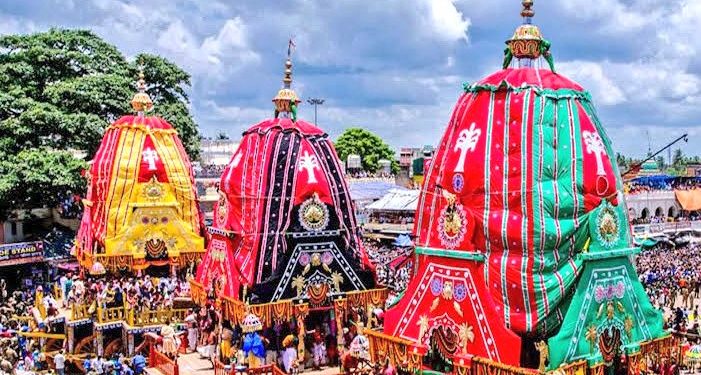Rath Yatra, as a festival, is famous not only in Odisha or India, but also around the globe. For that matter, it is celebrated with a lot of enthusiasm in faraway lands such as USA, UK, Russia, France, Germany, Japana, Brazil, Australia and atheist China among others.
While the devotees are by and large familiar with the festival and its proceedings, there are a number of interesting facts that many people do not know. Orissa POST brings you few of them.
This festival, observed annually, is observed on the second day of Shukla Paksha in the Ashadha month according to Hindu calendar. This year, it falls July 4.
As many as 1400 carpenters build the chariots from the scratch each year for the festival. These servitors have been doing their chariot building duty since generations and take immense pride in their job. The construction of the chariots starts on Akshaya Tritiya, in front of the palace of the King of Puri in a place known as Ratha Khala (chariot yard).
Gania forest range in Nayagarh district often provides the logs needed to build the chariots. Metal nails are not used in construction. After the Rath Yatra, the chariots are dismantled and the wood is used in the kitchen of Jagannath Temple to cook Mahaprasad.
Canopies for the chariots are made of almost 1200 meters of cloth. A team of 15 tailors make the canopies.
Lord Jagannath’s chariot Nandighosa is 44 ft and two inches tall, has 16 wheels each having a diameter of 6 feet and the color of the chariot is yellow and red. The horses of the chariot are white in colour and named Shankha, Balahaka, Suweta and Haridashwa. The name of the flag atop Nandighosh is Trailokyamohini and the rope is known as Sankhachuda. The chariot is guaded by Garuda and Nrusingha with Jay and vijay serving as gatekeepers. The charioteer of this chariot is Daruka.
Elder brother Lord Balabhadra’s chariot is named Taladhwaja. It has a height of 43 feet and 3 inches and has 14 wheels measuring six feet six inches in diameter. The chariot is green and red in color while the horses are black and named Tribra, Ghora, Dirghasharma and Swornanava. The name of the flag atop Taladhwaja is Unnani and the rope is known as Basuki. The chariot is guaded by Vasudev with Nanda and Sunanda serving as gatekeepers. The charioteer of this chariot is Matali.
Goddess Subhadra, the sister of the Lords, rides the chariot named Debadalana that has a height of 43 feet and three inches. The chariot has 12 wheels measuring six feet eight inches in diameter and is black and red in colour. The horses attached to this chariot are red in color and named Rochika, Mochika, Jita and Aparajita. Subhadra’s chariot Devadalana, also known as Darpadalana and Padmadhwaja has a flag named Nadambika and the rope is known as Swarnachuda. The chariot is guaded by Jayadurga with Ganga and Jamuna serving as gatekeepers. The charioteer of this chariot is Arjuna.
It is said that at the beginning of the festival, the Lords refuse to budge despite frantic efforts from devotees. That said, the chariots roll effortlessly when the Lords please.
Lord Jagannath and his siblings halt on the way back to their own abode after a stay of nine days at the Gundicha Temple. It is said that they have Poda Pitha on their way back to Srimandir. Lord Jagannath’s wife Goddess Mahalaxmi, however, blocks their entry back into the temple as Lord Jagannath went out on the trip with his sibling and without taking her along. She even goes on to break the Nandighosa out of anger. Lord Jagannath pleases the Goddess by offering Rasagola and gets to enter the temple only after this ritual.







































